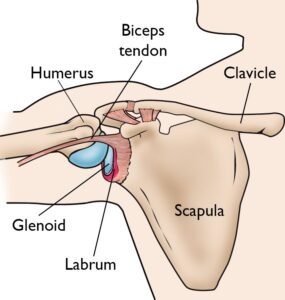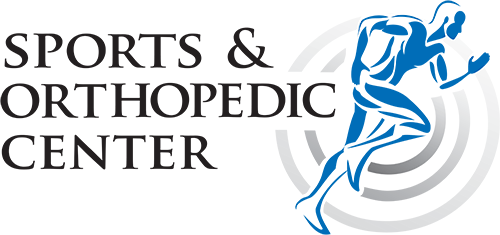ARTHROSCOPIC SLAP TEAR REPAIR
A SLAP tear is a specific kind of injury to your shoulder.
To help make your shoulder more stable, there is a ring of firm tissue, called the labrum, around your shoulder socket. The labrum (say “LAY-brum”) helps keep your arm bone in the shoulder socket.
SLAP stands for “superior labrum, anterior to posterior”—in other words, “the top part of the labrum, from the front to the back.” It refers to the part of the labrum that is injured, or torn, in a SLAP injury.
SIGNS AND SYMPTOMS:
- Pain in front of shoulder or deep in joint
- Sensation of the joint catching or grinding
- Pain with overhead movement
X-rays and magnetic resonance imaging (MRI) are taken to confirm the diagnoses and identify any other associated injuries, such as a rotator cuff tear.
CAUSES OF SLAP TEAR
- Fall on your outstretched arm.
- Fall on your shoulder.
- Brace yourself with your outstretched arm in a car accident.
- Lift heavy objects repeatedly or too suddenly.
- Do a lot of overhead activities, such as throwing a baseball.
NON-SURGICAL TREATMENT
- Rest: The doctor may recommend limiting activities that involve overhead motion and resting the shoulder to allow the tissue to heal.
- Medications: Anti-Inflammatory medications may reduce pain and inflammation associated with this injury.
- Injections: Corticosteroid injections to the affected portion of the shoulder can provide short-term pain relief and reduced inflammation, when medication is ineffective or not an option.
- Physical Therapy: Certified Physical Therapists work closely with doctors to create an individualized program to maximize healing and restore function, strength and mobility.
SURGERY – ARTHROSCOPIC SLAP TEAR REPAIR
When conservative treatment fails, surgery may be recommended to address the injury.
A SLAP repair is an arthroscopic shoulder surgery using sutures to reattach the torn labrum back to the bone of the shoulder socket. During the shoulder arthroscopy, other injuries may be detected that can also be treated, including bursal inflammation, rotator cuff tears, and cartilage damage. Therefore, a SLAP repair may be just a part of the surgery to fix shoulder pain. The steps of a SLAP repair are:
SLAP tears can be repaired using:
- SLAP Debridement
- A SLAP debridement simply removes any excess or damaged tissue that causes symptoms of catching and pain in the shoulder. In some people, the damage is minimal, and removing the torn tissue may be adequate to address the cause of the pain.
 SLAP Repair
SLAP Repair
- A SLAP repair is performed to surgically repair the tear within the labrum. Usually, a SLAP repair is performed using sutures to reattach the damaged labrum to the bone of the shoulder socket.
- Biceps Tenodesis or Tenotomy
- A biceps tenodesis or tenotomy may be considered when the SLAP tear cannot be repaired, or if the biceps tendon is significantly damaged.
RECOVERY AFTER SURGERY
Following a SLAP repair a period of time of restricted motion is maintained for about six weeks. During this first phase of rehabilitation, some passive motion is allowed to prevent shoulder stiffness. In the first phase, the torn labrum is healing to the bone in its proper position.2
Once healed, patients enter the second phase of rehabilitation and can begin more motion at about six weeks. Physical therapy continues to help maintain motion and regain the strength of the shoulder.
The third phase of rehabilitation involves more active strengthening of the muscles that surround the shoulder joint. The final phase is geared towards the restoration of full athletic activities, and full recovery is expected within 4-6 months.
Don’t hesitate to call us and book an appointment with the best team of Orthopedic Surgeons and Physical therapists at the Sports and Orthopedic Center or Call (954) 4819942

